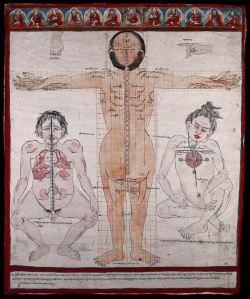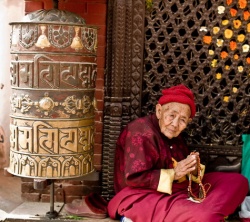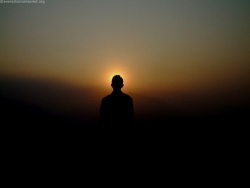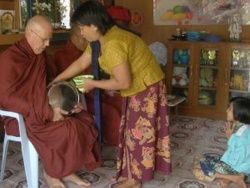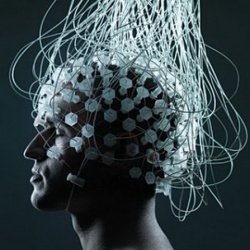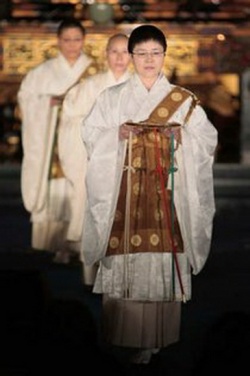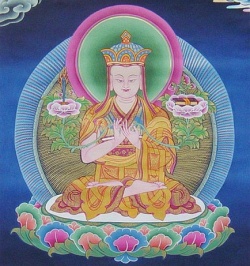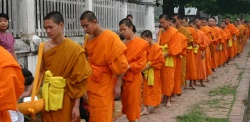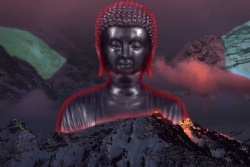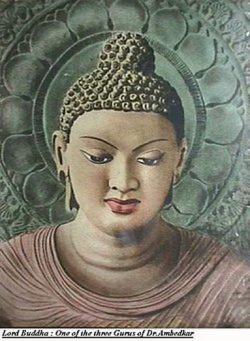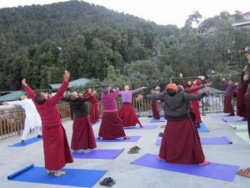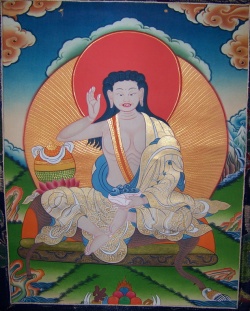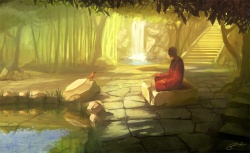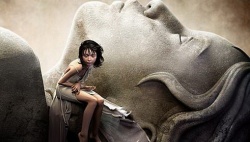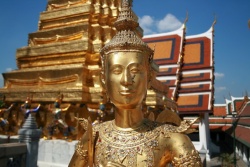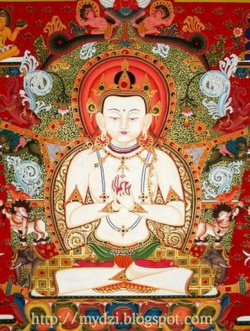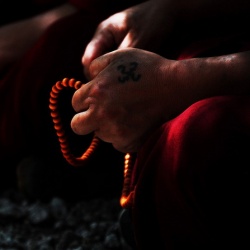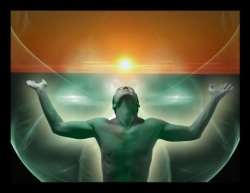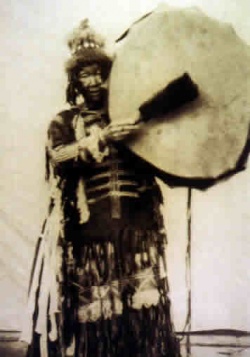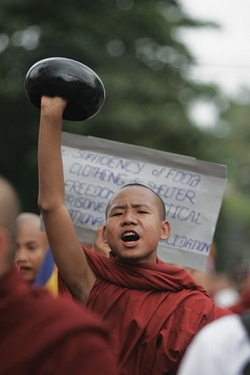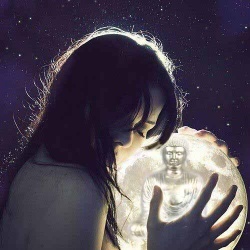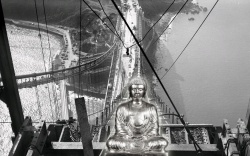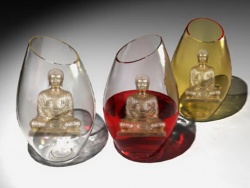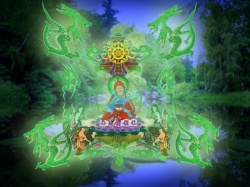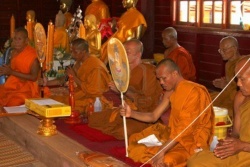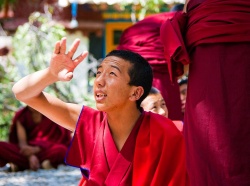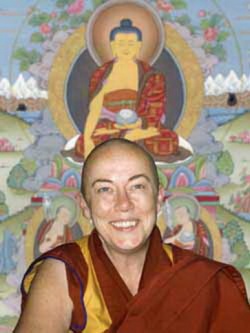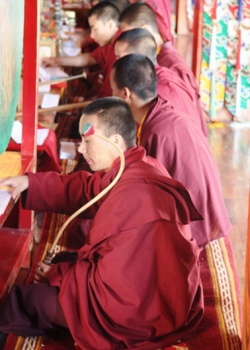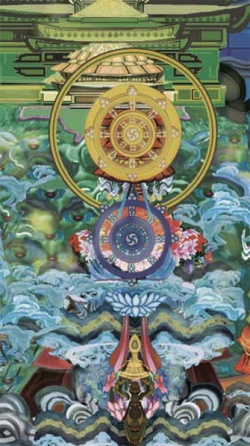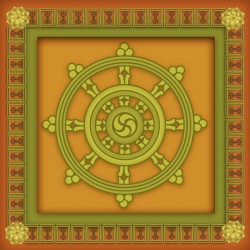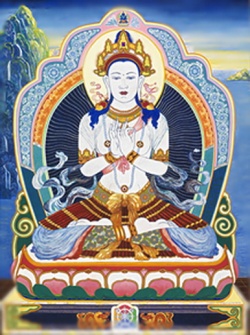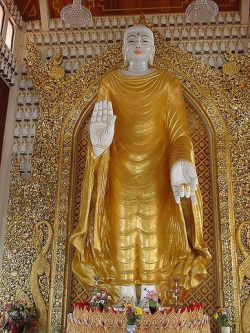Four tantras
Four Tantras
The basic text of Tibetan Medicine
The Four Tantras
The basic text of Tibetan Medicine is called the "Four Tantras" and was taught by Buddha himself. All Tibetan physicians study it.
Tantra means "lineage". It is composed of four books:
The First Tantra is called "Root Tantra" and it contains very briefly an explanation of all diseases. It is like a seed.
The Second Tantra, composed of 31 chapters, is called "Explanatory Tantra". It explains all about the anatomy and physiology of our body; the process of birth and dying.
The Third Tantra, composed of 92 chapters, is called "Oral Transmissions Tantra" and deals with the cause, the nature, the treatment of diseases and their classification.
The Fourth Tantra, composed of 25 chapters, is called "Last Tantra" and it explains the 18 methods of diagnosis, pharmacology and support, or external treatments.
The entire text includes 156 chapters.
Buddha gave the teachings of the Four Tantras in Benares (Varanasi, India) when he was 71 years old. He gave them in order to benefit sentient beings, not to allow doctors to become rich.
For this reason, Tibetan Medicine stresses the attitude a physician should have.
In the past, in India and Tibet, doctors would not present the patient with a fee. Patients would simply give an offering and if they did not, the doctor would not complain; his main goal was the practice.
The motivations that bring people to study the Four Tantras are diverse: to be healthy and live a long life; to practice the spiritual path; to accumulate richness; to be happy.
Those who study this text to become rich have a wrong motivation and misunderstand the main goal, that is, to benefit others.
The text begins with a phrase in Sanskrit: Amrita hridaya angha ashta guhya upadesha tantra nama.
Amrita hridaya means: "the essence of immortality".
It indicates that the Four Tantras are like the amrita, the nectar of immortality.
If we drink amrita, or if we study and follow these teachings, we become immortal. In Sanskrit amrita means: "immortality nectar";
hridaya means: "essence".
Angha means: "branches", ashta means: "eight"; eight branches.
Guya upadesha means: "secret oral transmission", an oral instruction that is not taught in public, instead, it is taught only to whom is truly interested and wishes to learn.
Whoever receives these teachings has to keep them secret.
This introduction to Tibetan Medicine follows the medical thangka (painting) of the medicine tree . The first medical thangkas date back to the time of the Fifth Dalai Lama.
Desi Sangye Gyatso was a great master and he conceived 80 medical thangkas in order to offer some clear and immediately understandable outlines of Tibetan Medicine as well as to allow illiterate people to study medicine.
==The medicine tree==
The medicine tree has two main branches: the left one is the branch of health; the right, the branch of disease.
At the basis of the general theory, we come to the three humours: wind, bile and phlegm.
These three humours exist in all of us, whether we be healthy or sick.
The cause of their existence are the three poisons: hatred, attachment and ignorance.
The three mental poisons are the roots of the three humours and the three humours are the fruit of the three mental poisons.
In the medicine tree, blue is the colour for wind, yellow for bile and green for phlegm. Inside our body, there are 7 constituents and 3 excretions.
The essence of food, when transformed, produces these constituents. Waste is expelled through the three excretions. When this system works well, we are in good health.
The number of chakras, three, five, nine and so on, varies according to the Tantra that explains them: each Tantra has a different chakra system.
In the Tibetan medical system we consider five 5 chakras: the chakra of the head, throat chakra, heart chakra , navel chakra and secret chakra (at the genital organs).
Furthermore, we have 5 types of wind, 5 types of bile and 5 types of phlegm. Wind, Bile, Phlegm
==The 5 winds are:==
The life-sustaining wind that resides in the head chakra, governs the bodily functions and sustains life. It is the wind that permits actions such as breathing, swallowing, sneezing and spitting.
The ascending wind that resides in the throat chakra, whose function is to produce sound when we talk, gives us a pleasant appearance, makes us strong and active and is responsible for memory.
The pervasive wind that resides at the heart chakra, pervades the whole body and allows for all movements.
The fire-like wind that resides in the navel chakra, allows for the functioning of the internal organs (heart, liver, intestines...); its main function is the digestion. It distinguishes the nutrients from the wastes in the food that we eat.
The finest part of the food that we eat is transformed into blood, bones, muscles an so on (the seven constituents). This wind allows for the process of transformation.
The descending wind that resides in the secret chakra, flows in the bladder, in the intestines and in the genital organs; its function is to expel sperm, menses and urine.
==The 5 biles are:==
The digestive bile. If you divide the stomach into three parts, this bile resides in the upper. Its function is to refine and digest food and to strengthens the other four biles.
The colouring bile that resides in the liver, whose function is to give colour to the parts of the body.
The accomplishing bile that resides in the heart, whose function is to bring up thoughts, worries, anxiety, anger etc.
The sight bile that resides in the eyes, whose function is to allow us to see. If it weakens, our sight also weakens. While this bile is healthy, we have perfect sight.
The pigmenting bilethat resides in the skin, whose function is to colour the skin. When we have a bile sickness our skin changes colour and becomes first yellow then black.
==The 5 phlegms are:==
The sustaining phlegm that resides in the chest, sustains all other four phlegms; its function is to move all body fluids.
The decomposing phlegm that resides in that part of the stomach where the food is not yet digested, whose function is to grind all kinds of foods.
The tasting phlegm that resides in the tongue, helps to be aware of tastes.
The satisfying phlegm that produces the satisfaction feeling resulting from whatever is good in life.
The connective phlegm that resides in the joints, allows us to move them. When it does not function well we experience pain and joint problems.
To be in good health all these humours have to be balanced. When a humour becomes weak or too strong it creates unbalance and therefore, disease.
==Constituents and excretions==
When we eat, our body transforms the food until it forms the 7 constituents; if we eat rich food the transformation is faster. The food essence becomes blood;
from the blood derives flesh, from the flesh fat, from the fat bones, from the bones marrow and from the marrow sperm and ovum.
The 3 main excretions are:
sweat,
urine and
feces.
We have 15 humours, 7 constituents and 3 excretions: in all, 25 components. If these 25 components work well, we are healthy; otherwise, we become sick.
In the medicine tree are depicted three animals: the rooster, the snake and the pig.
These three animals symbolically represent the three mental poisons: the rooster symbolizes attachment, the snake hatred and the pig ignorance.
The three mental poisons are the cause of the diseases of the three humours and of the three humours themselves.
Attachment produces wind; hatred produces bile and ignorance produces phlegm.
Attachment produces wind: you will notice it when you have long sessions of sexual activity, without pause; the next day you will feel confused, full of air and with a headache.
This is just an example; in fact, attachment produces many types of wind.
Hatred produces bile: you can clearly see it when you get very angry.
Your body temperature increases and your face becomes red. Doctors advise to drink water to calm down.
Ignorance produces phlegm. When phlegm increases we become fat, lazy, slothful. We feel like doing nothing, we don't even feel like eating.
==Imbalance and illness==
Now we are going to explain the right side of the medicine tree, the part on imbalance and illness.
The three mental poisons are the cause that generates the three humors, but they are also the primary cause of all the illnesses.
Therefore, if we want to heal ourselves deeply, we have to treat our mental poisons too. This at the subtle level.
At the gross level, the sicknesses are caused by many factors, for example the climate. If the climate is unusual, if the seasons are not balanced, it is easier to become sick. For example, cold weather in summer or too hot a summer or too cold a winter.
Other factors of disease are diet, behaviour and so on. Furthermore there are many malignant spirits that cause health problems. Many Westerners do not believe in spirits but in Tibetan Medicine we talk about them.
We fall sick due to wrong diet; for example, when the climate is hot the bile humour increases: if we eat a lot of meat and drink a lot of wine (warming foods) the bile humour increases even more and we become easily sick. We fall ill due to wrong behaviour: for example, if we wear heavy clothes in summer or if we stay naked in winter, when it is very cold.
==Localisation of the three humors==
==three humors==
Phlegm diseases affect the upper part of the body.
Bile diseases, liver and kidneys.
Wind diseases, back and lower part of the body.
The phlegm humour, which is of the nature of ignorance, resides in the brain. This is the reason why phlegm diseases affect the upper part of the body.
When Tibetans become angry they beat their chest, because anger resides in the heart chakra. Anger is of the nature of hatred: when we lose temper our temperature increases and, since heat is of bile nature, bile increases.
Attachment produces wind; wind resides in the secret chakra and is produced from various attachments, like attachment to sex and so on.
The three humors move in specific places. Each one hits its own territory: for example, bile does not affect the feet.
==Wind==
If we have a strong wind disease, the first trouble we experiment is pain in the bones. This means the bones are a way of the wind. As for the sense organs, the wind runs through the ears: therefore, with strong wind problems ears will ring.
Sometimes the trouble is so strong that hearing is hindered. The wind also goes through the skin: with strong wind problems the skin flakes off.
The five vital organs are: heart, liver, kidneys, lungs, spleen.
The wind runs through the heart; with strong wind problems the heart suffers; for example we can have strong palpitations and so on.
The wind runs also in the central channel , vital channel of the body. The hollow organs are: where the sperm forms, bladder, gall bladder, intestines (both), colon, stomach.
The wind humour runs through the hollow organs: with a serious wind disease we feel inflated at thelevel of the navel. So the wind enters the bones, then the ears, the skin, the heart and the hollow organs.
==Bile==
Bile enters the blood, therefore when we have bile problems the veins become thicker because the blood circulates very quickly and it gets very warm.
Bile problems make us sweat very much; when we sweat a lot it means the bile humour is unbalanced.
Among the sense organs bile resides in the eyes: a high bile makes the eyes yellow.
Vital organs: liver. Hollow organs: intestines, gall bladder. Due to bile imbalance the eyes become yellow and the liver swells.
==Phlegm==
Phlegm circulates in meat, bones, fat, sperm. Normally an imbalance of the three humors is detected in the faeces and the urine; serious phlegm problems are well diagnosed from the urine.
When phlegm becomes unbalanced, we have catarrh from the nose and the tongue become thick and swollen. Phlegm is found in the lungs, spleen, stomach, kidneys, bladder and feet.
The three humours do not only divide body zones but also the various types of environments and life ages.
==Division according to age==
Tibetan Medicine explains that from 0 to 16 years old we are children; from 16 to 70, young; and after 70, old.
Old age is the time of life when wind humour prevails. Due to this reason, wind diseases happens especially during this age. Children or young people rarely suffer from wind disorders. Wind diseases caught at an old age are difficult to heal.
Youth: this is the age in which bile prevails. Therefore bile problems are more difficult to cure and easier to get.
Childhood is the phlegm age of life: at this age phlegm problems are the most difficult to cure.
Division according to geographic areas and seasons
The first drawing (in the medicine tree) represents a mountain with snow and wind: that means a very cold and windy place. This place has the nature of wind, where we catch wind diseases.
The second drawing represents a hot desert, like Rajasthan in India. Hot places favor {bile disorders.
The third place is green, wet and rainy: a place very conducive to phlegm diseases. This is true both for warm and wet and cold and wet environments. What matters is the presence of much dampness.
Seasons
The Four Tantras also explain how the seasons influence the humours.
In summer wind problems manifest: people feel weak, especially in the morning and in the evening.
Bile manifests in autumn: it gets worse during the day and in the evening.
Phlegm manifests in spring, when everything sprouts: many people suffer from heartburns, a sign of a phlegm worsening. Especially in the evening and at dawn.
It is very important, for diagnosis and cure, to take into consideration all these factors: age, geographic area and season.
Incurable diseases causing death
Our life depends on three conditions: vital energy, fortune and karma. three conditions of life
If vital energy, fortune and karma are not depleted we keep on living. Otherwise there is nothing we can do, we have to die.
If one of these conditions comes to an end even positive things, like appropriate treatments, can cause death.
For example, for a patient with fever it is normally good to drink water. But, if one of the three life supporting causes is missing, even water can change into a poison and kill the patient.
The favourable cause becomes unfavourable and provokes death.
The picture of the burning house represents a poisoned patient that nobody can help: for him even treatments become poison.
Another picture shows a broken central channel, or shushumna. This too is a cause of certain death: the central channel cannot be repaired. Even a fever too high is a cause of certain death.
And wind problems, when they become very serious.
When we are very weak no medicine can help; our body is not able to assume medicines and therefore we die.
Then we have "changeable" incurable diseases.
For example, the disease appears as a bile problem and so it receives a bile treatment but, during the cure or shortly after, it manifests as a wind or phlegm disease and so on. These are the changeable diseases.
==Diseases caused by spirits==
Diseases provoked by spirits can manifest in different ways but they have one thing in common: they are not curable by medicine.
We need to go and see a Lama who will make a mo (divination), or something like that, to discover the origin of the problem.
After that he will prescribe some ritual. Only after the ritual has been performed and the spirits exorcised the patient can start taking medicines.
In fact, the medicine become useful only after the spirit has left.
It may also happen that a sick people receives a visitor from far away and when the visitor departs he gets worse.
This means that the visitor was followed by spirits that damaged the patient.
When we are born 5 different spirits are born with us which will accompany us throughout our life.
We have also a thing called la, our vital energy. In the world exist some spirits, the Don, that can steal the la from a very weak person. From then on the disease gets worse and if the la is not recovered, the patient will die.
There exist some special pujas (ceremonies) to recover the la.
==Karmic diseases==
Karmic diseases are due to negative actions committed in our past lives. They are not curable by medicine. Like with the diseases caused by spirits, the only chance is to go to a Lama and ask the right purification practice, for example the "100 000 prostrations".
In Tibet many times people that were considered incurable after these practice were healed. Unfortunately, it is not always possible to escape the consequences of a particularly heavy karma. Sometime, no cure exists.
==Types
As we have seen, in Tibetan Medicine there are three humours. When we are born, for karmic reasons, hereditariness and so on, we can have a constitution more connected to one humour than to the others.
Very rarely we have pure types or the balanced combination of the three humours. More frequently we have the combination of two humours (one of the two stronger). So we can have wind-bile types or bile-phlegm types and so on.
How to recognize the types:
Lung type: lean, bent, with a bluish, dry skin; dry hair; very talkative. It cannot bear the cold (he is always looking for warm places). He is a great walker but gets easily tired. He is very reactive.
Bile type: always thirsty and hungry but not necessarily fat. Hair is blonde and the skin yellowish. Very intelligent. He is also very proud and arrogant and becomes easily angry. Phlegm type: basically fat, with white complexion. His skin is cold. He is always sticking out his chest. He has little appetite. He is very patient and slow.
The phlegm type person is very lucky; the bile type comes second and the wind type is the less lucky of the three. Also from the point of view of life span, the phlegm type has the longest life; the bile type comes second and the wind type last. This is the nature of the three humours.
==How to recognize the type in a child==
With small children phlegm nature prevails but a good Tibetan doctor can still recognise their type.
==How to prolong life==
There is a method to prolong life: by saving the life of many beings in danger.
For example, by buying and the let free animals that are going to be killed. In India people go to fishermen, buy fishes and let them free. Saving the life of living beings is the best method to prolong life. This behaviour is followed both by Buddhists and by Hindus.
Also the Nagpo Gutup pill, which is made of 9 substances and contains many blessings, from the point of view of Tibetan Medicine has the potency of prolong life and makes us more happy.
see also: Four Tantras
